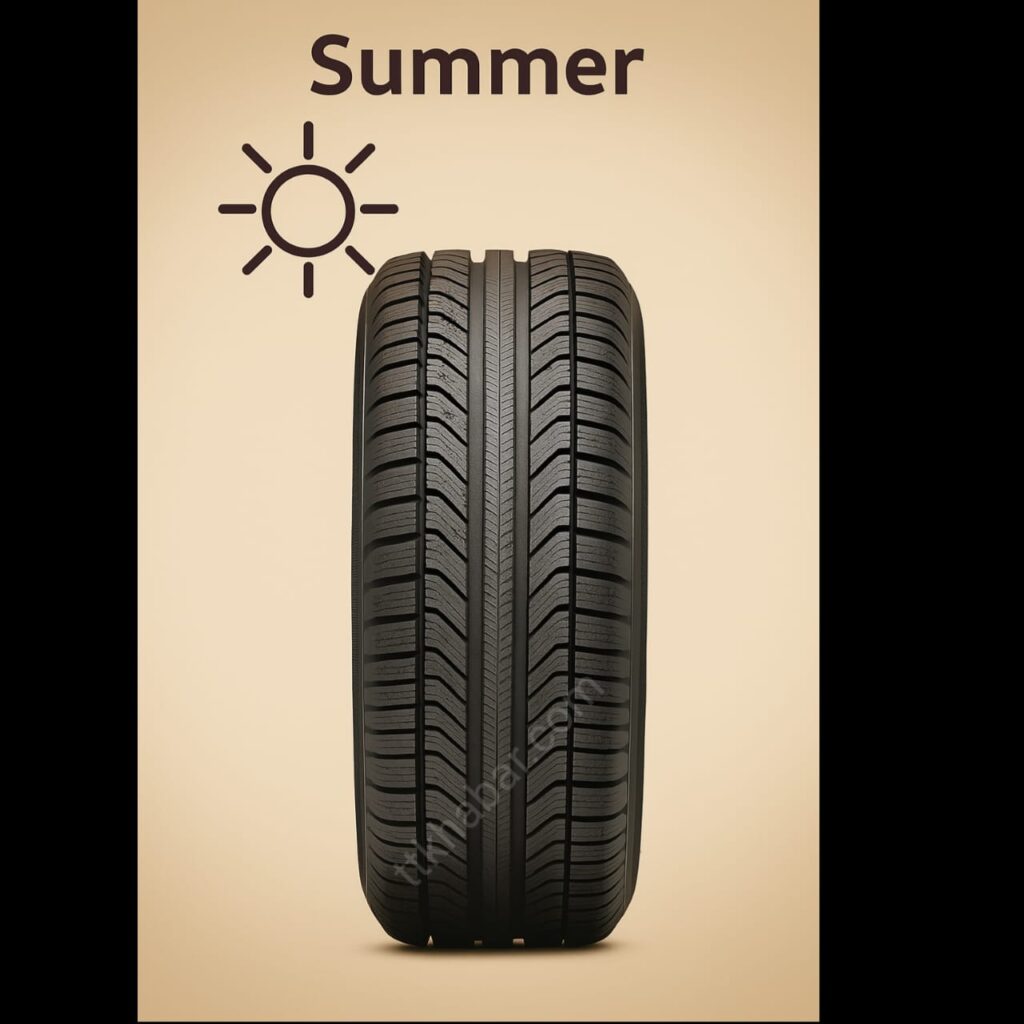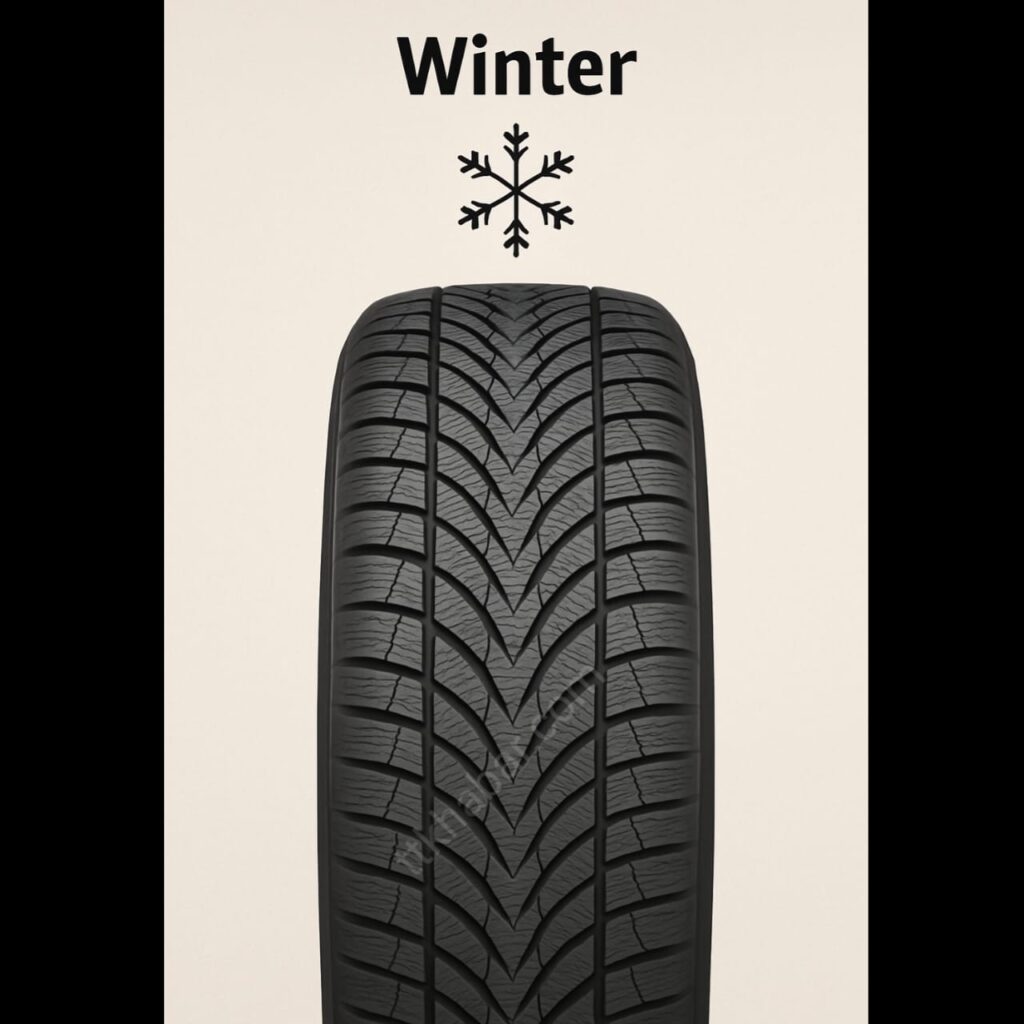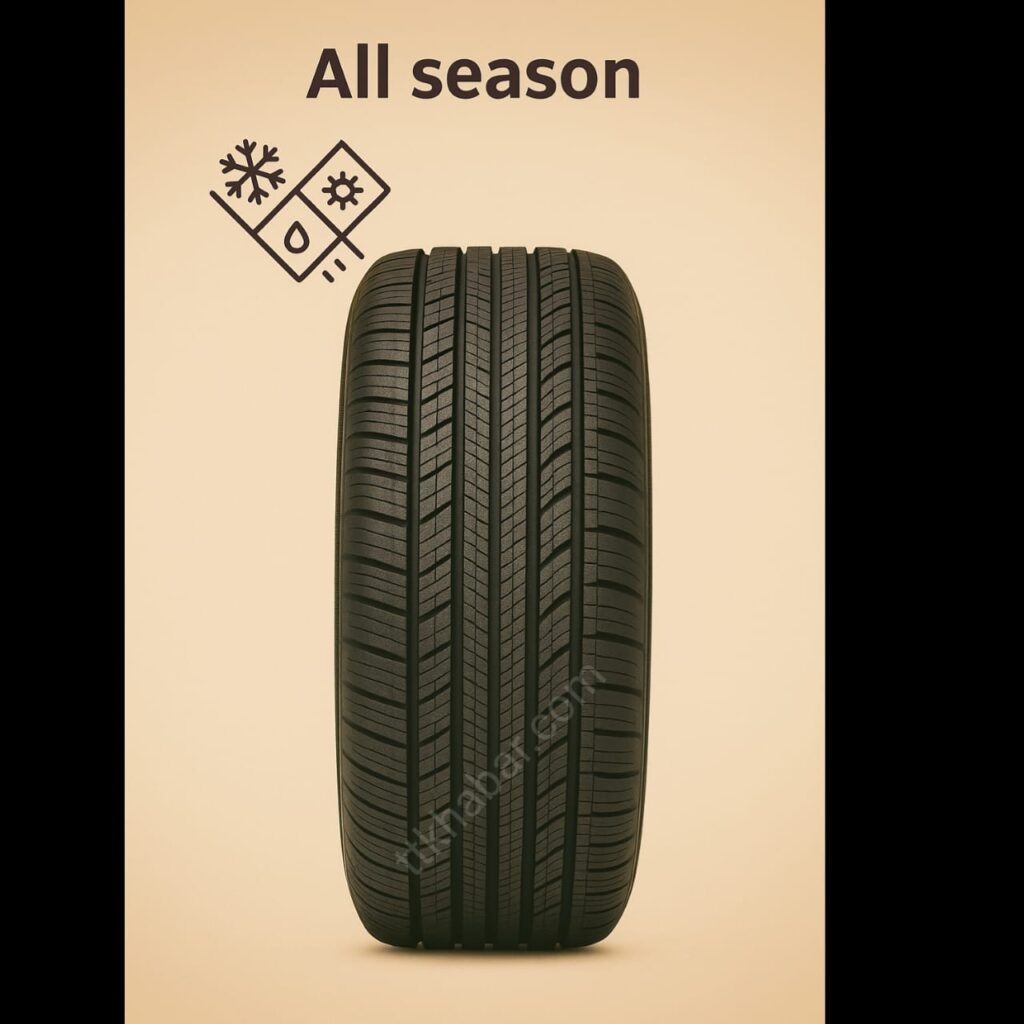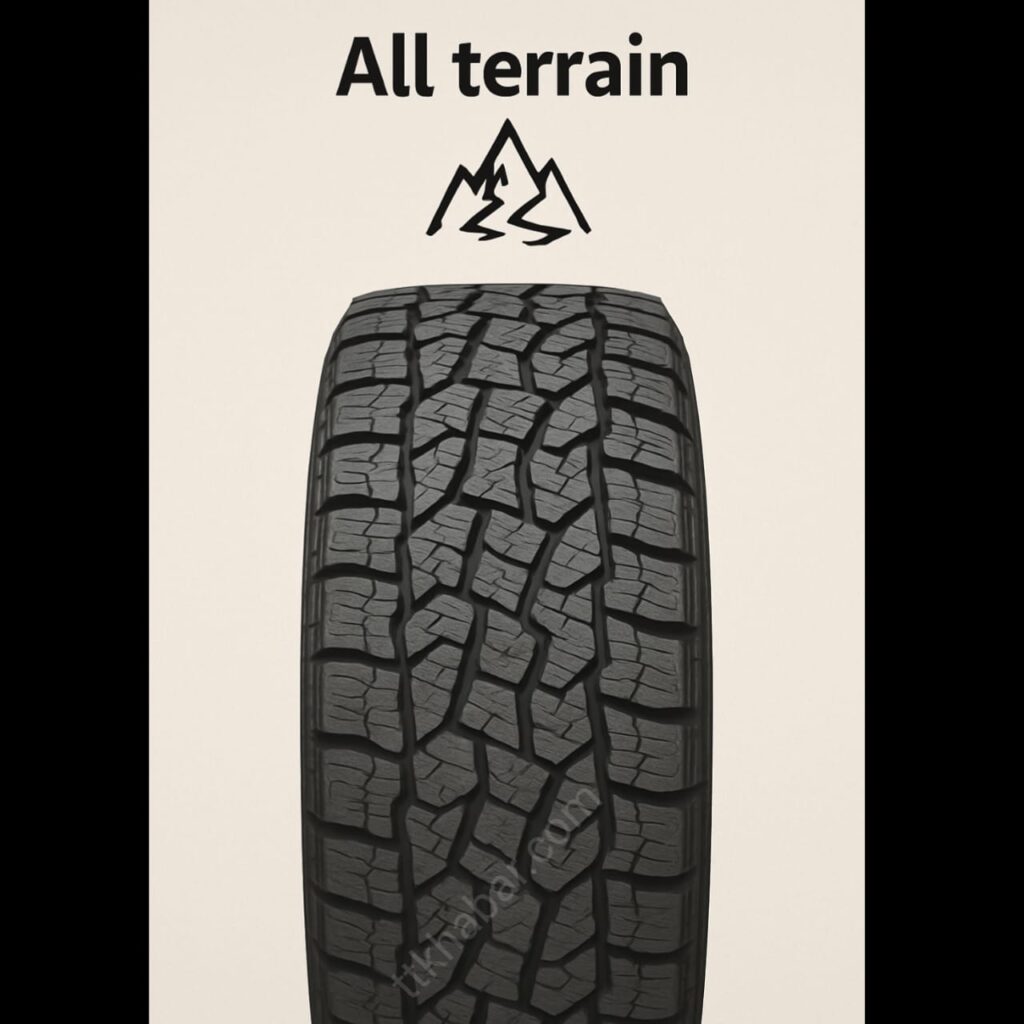Best Tyre Explanation For You
Do you think that all tyres are the same?
No, all tyres are not the same. Actually tyres are designed keeping in mind different weather and road conditions. So that the life of the tyre is maintained. If you are also not able to choose the right tyre for your car, then this blog is for you. Today we will discuss which tyre is right for you, which increases the mileage and safety of your car along with grip on the road.
1. Summer Tyres – High Grip in Heat
Summer tyres are specially made for hot climates. They use a soft rubber compound, which provides good grip on the road in heat. Their tread pattern is narrow, which gives more contact area and good braking power.

- Designed For: Warm temperatures & dry/wet roads
- Best For: City driving, highways, performance driving
Features:
- Special rubber compound that remains soft in high temperatures
- Excellent dry & wet grip
- Better cornering & braking performance
- Low rolling resistance = Better mileage
Limitation: They become hard in cold weather, and grip decreases. Avoid in snow/frost.
Recommended for: Southern India, long summer zones like Maharashtra, Tamil Nadu, Telangana, etc.
2. Winter Tyres – Best for Cold & Snowy Conditions
The rubber compound of winter tyres is soft and flexible even in freezing temperatures. It also maintains grip on slippery roads. Their tread design is zig-zag and deep, which displaces snow and ice.

- Designed For: Snow, ice, frost & cold regions
- Best For: Extreme winters, hills & northern states
Features:
- Rubber compound that remains flexible in cold
- Deep tread patterns and extra sipes (tiny cuts) for better snow grip
- Excellent braking on icy roads
- Prevent hydroplaning.
Limitation: Wear-out happens quickly in summer, and grip is less.
Recommended for: Kashmir, Himachal, Uttarakhand, Northeast India.
also read this– Tubeless vs Tube Tyres: Which one is better?
3. All-Season Tyres—Balanced for All Weather
All-season tires are a combination of summer and winter tyres. This is not for extreme heat or snow but is best for waking up where the weather is not too drastic. Their tread is slightly deep, and the rubber compound is suitable for average temperatures.

- Designed For: Mild summers and light winters
- Best For: All-rounders, city and highway use
Features:
- Mix a compound that handles both moderate cold and heat.
- Balanced performance on wet, dry, and lightly snowy roads
- Longer tread life than summer or winter tyres
- One-time fit, no seasonal change needed
Limitation: Performance in extreme snow or heat is less than summer/winter tyres.
Recommended for Delhi-NCR, Bengaluru, Kolkata, and Ahmedabad, where the climate is balanced.
4. All-Terrain Tyres—For Adventure & Off-Roading
All-terrain tyres are made for those who ride sometimes on the highway and sometimes off-road. Its tread pattern is rough, which allows it to easily handle terrain like mud, rocks, and gravel. Sidewalls are strong; puncture resistance is high.

- Designed For: Mud, sand, gravel, rocky terrain
- Best For: SUVs, off-road vehicles, travel junkies
Features:
- Aggressive tread pattern for maximum grip
- Durable sidewalls for puncture resistance
- Suitable for both highway & trails
- High load-carrying capacity
Limitation: More noise and less mileage on smooth roads. Ride comfort slightly lower.
Recommended for: Mahindra Thar, Toyota Fortuner, Jeep, Himalayan/ADV bikes
Conclusion – Which is best for You?
You should select tyres according to your location, climate, and driving style. Choosing the wrong tyre not only eliminates comfort but can also put safety at risk. That is why it is very important to understand the weather, terrain, and usage before purchasing tyres.
| Use Case | Best Tyre Type |
|---|---|
| City Driving | Summer / All-Season |
| Hill Driving | Winter Tyres |
| Mixed Climate | All-Season |
| Off-Road & Adventure | All-Terrain |
Tips
- Make sure to get tyre rotation done every 5,000–8,000 km.
- Check tyre pressure monthly.
- Replace the tyre if the tread depth is less than 2 mm.
- Make sure to clean tyre after off-roading.
What tyres do you use? Is your region suitable for all seasons, or do you need winter tyres? Let us know in the comments and share the article!
Do all-season tyres work in snow?
They are fine for light snow, but winter tyres are best for deep snow and ice.
After how many kms should tyres be changed?
Tyre wear should be checked after 40,000–50,000 kms. If the tread depth is less than 2mm then replacement is necessary.
Can off-road tyres be used in the city?
Yes, but comfort and mileage may be slightly less due to aggressive tread.
